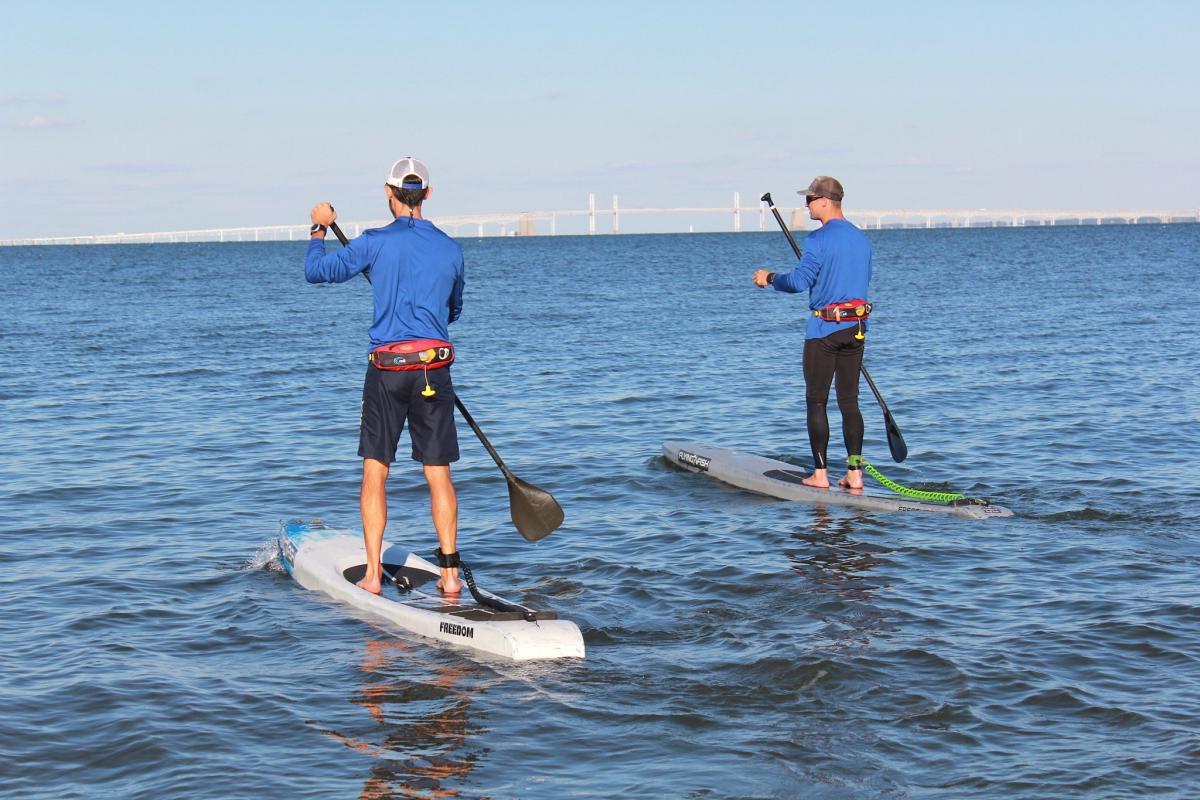
Two hundred and fifteen miles. Eight days. From dawn to dusk. Starting Friday August 27, avid paddlers will set sail in Havre de Grace and begin their journey along the Eastern Shore of the Chesapeake Bay. Their final destination? The Atlantic Ocean.
Last summer, Chris Hopkinson began a similar journey that created quite a buzz when he became the first person to traverse the Chesapeake Bay via standup paddleboard. His adventurous voyage inspired the creation of this all-new Bay Paddle—a team relay benefitting the Oyster Recovery Partnership and Chesapeake Conservancy, taking place between now and Labor Day Weekend.
Growing up in Annapolis, Hopkinson was always familiar with the Chesapeake Bay but never had access to it. Unlike many people residing in the waterfront community, Hopkinson’s family didn’t have a boat and never took to water sports. But all of that changed in 2015 when Hopkinson’s wife gifted him with his first standup paddleboard.
“It was a big recreational board, you know—11 feet long, pretty wide,” Hopkinson says. “That was the first time I really had access to the bay, rivers, and everything else.”
Around the same time, Hopkinson also began to learn about oysters.
Oysters are crucial to the health of the Chesapeake Bay and provide important ecosystem services, with the filter-feeding shellfish cleaning up to 50 gallons of water per day, and oyster reefs supplying food, habitat, and protection to marine life in the bay. The Oyster Recovery Partnership and Chesapeake Conservancy are dedicated to preserving the bay’s native oyster population, as well as its other wildlife, land, and water for future generations to experience.
Hopkinson’s initial trip was his way of helping the bay, with t-shirt sales and donations that aimed to support oyster restoration work.
“I really believed in the Oyster Recovery Partnership’s mission,” he says. “I felt like a lot of people weren’t aware of how important oysters are to the bay.”
Now, almost a year later, Hopkinson has launched the Bay Paddle, a multi-day race ending on September 3. The 102 participating paddlers will travel an average of 22 to 33 miles each day along the shorelines of the bay’s Eastern Shore.
The end goal isn’t to win or score the fastest time, but to work as a team while appreciating the landscape of the nation’s largest estuary. This challenge will test the mental and physical limitations of paddlers, but there are no requirements to participate every day. Paddlers can join and depart the race as they please.
The effort has currently raised $90,000 of its $200,000 fundraising goal, and Hopkinson is optimistic for the future of his event—which he hopes to expand each year, potentially creating an on-land festival experience for supporters to cheer on the paddlers. He wants to create more awareness about the bay, and perhaps even turn his route into one akin to the Appalachian Trail.
“I hope people that are paddling this year have that experience that I had, where they just appreciate the bay,” Hopkinson says. “And then they feel more responsible for doing more to protect it.”
